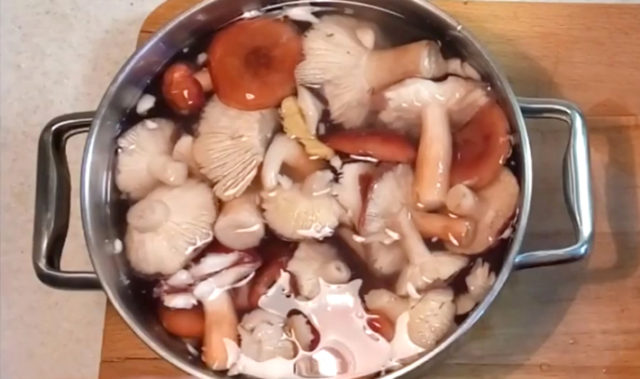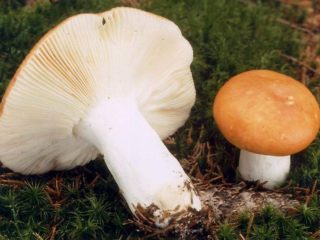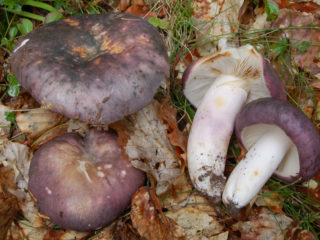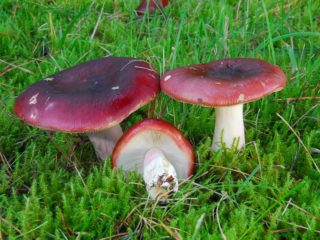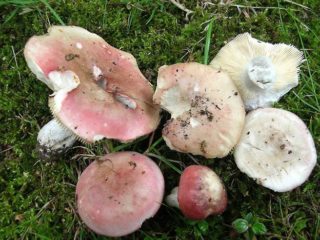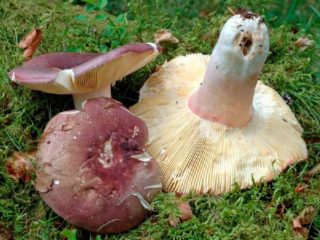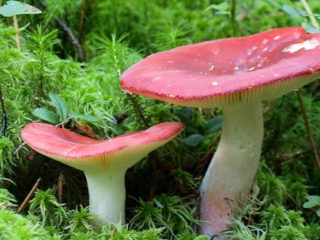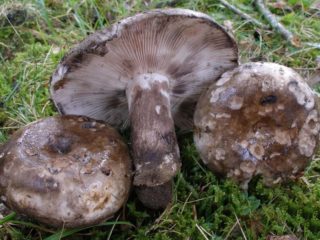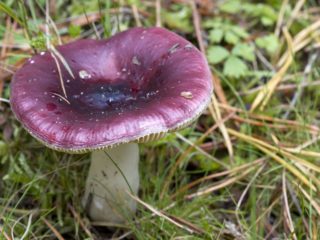Content
Mushroom picking is a very exciting activity for both amateurs and avid mushroom pickers. Mushrooms are not only tasty, but also useful as a source of protein: nutritionists jokingly call them “forest meat,” one of the most famous types of which is russula. They are ubiquitous and easy and fun to collect. They are fried, boiled, salted, pickled. But not everyone knows whether it is necessary to clean russula and how to do it correctly so that they remain intact and do not fall apart.
How to process russula after collection
Russulas, like all other mushrooms, are a perishable product, and after collection they must be quickly cleaned. If you do not follow this rule, the processes of breakdown of protein compounds and the formation of toxic substances will begin in them.
The collected russula immediately after collection must be subjected to primary processing - cleaned of debris, dirt, moss and rinsed well before cooking. Methods for cleaning russula will depend on their condition and place of growth. If they were collected in moss or grass, it will be enough to remove the wormy ones; for the rest, lightly scrape the cap and rinse thoroughly with water. If russulas were found in sandy areas, you must first clean the stems from soil and sand, then cut off the edges and only then rinse.
How to wash russula mushrooms
Rinsing will help to thoroughly clean the mushrooms from various debris. Russulas are very fragile and delicate. If you don't handle them carefully, they will literally crumble in your hands. To prevent this from happening, after collection they must be cleaned by placing them in a large, spacious container filled with water. Some of the dirt will float or settle to the bottom. After some time, the water should be changed. Soaking is repeated until all the mushrooms are completely cleaned.
The hats are covered with a sticky film that can collect a lot of forest debris. To get rid of it, after soaking, place the mushrooms under running clean water. This will help clean them from adhering dirt, leaves and blades of grass.
Russula cleaning
Cleaning russula is no different from cleaning other mushrooms. And it should start already at the collection stage. This will require a certain amount of time. Large russulas, unlike small ones, should be cleaned more thoroughly. You need to pay attention not only to the legs, but also to the hats. This must be done correctly, following a certain sequence of actions.
Is it necessary to peel russulas from film and skin?
Small mushrooms can be eaten without removing the film and skin. This will not affect the taste of the finished dish. Large specimens are recommended to be cleared of these elements. When boiling, salting or stewing, the film and skin begin to become very bitter.
It is not easy to remove the film from the cap, but sometimes it is better to leave it. The film preserves the integrity of the mushrooms and prevents them from falling apart during cooking. But it is precisely this that is the reason that after cooking, bitterness appears in mushroom dishes, which can be eliminated if the water in which the soaking was carried out is drained, new water is poured in, and the russula is boiled for 20 minutes.
Why clean the caps of russulas?
The ubiquity of mushrooms makes them dangerous to human health without proper cleaning and processing. The film covering the caps, like a sponge, absorbs all harmful substances from the environment. Chemicals and exhaust gases are concentrated in large quantities in mushrooms. Therefore, before you start cooking, for safety reasons, you should remove the film from the russula.
In addition, old russula are not recommended for collection. They can be easily identified by the color of the pulp; in mushrooms that are unsuitable for food, it turns yellow. Even if outwardly such a specimen looks intact and strong, it is not worth collecting.
How to properly clean russula mushrooms
To properly clean the russula so that they do not break, you should follow a few simple steps:
- To clean the mushrooms you will need a knife, paper napkins and a colander.
- It is necessary to cut off the tips of the legs and clean them of adhering sand and earth.
- If worm tunnels are visible on the cut of the stem, such mushrooms should be discarded immediately.
- Darkened areas should be cut out.
- To clear stuck forest debris, simply scrape it lightly with a knife. Dirt often collects in the tubular layer, so it is also important to clean it quickly and carefully with a knife.
- Afterwards, wipe each mushroom with a dry cloth, which will remove any remaining small debris and remove excess moisture.
- Remove the film from the cap with a knife and peel the russula from the skin, moving from the edges to the center. Don't worry if some part may remain in the center. But you should try to clean the red and bright blue caps completely. They have increased bitterness.
- Place in a colander and rinse thoroughly under running cold water.
Soaking Russula
One of the points of processing and cleaning large russula after collection is their soaking. The procedure is simple and does not require any special effort. But forest products processed in this way can be safely used for cooking. All bitterness will be removed from them, as well as all insects hiding in the deepest parts of the plate caps.
Do I need to soak russula?
Depending on how the russula will be prepared in the future, a decision is made on the need to soak them. Before frying, it is recommended to soak and boil all lamellar mushrooms, as there is a high risk of poisoning. Before cooking, simply rinse the russula thoroughly and clean it under running cold water. Mushrooms intended for drying should not be soaked. They are cleaned with a dry brush.
Soaking mushrooms takes quite a long time.If this is not possible, it is recommended to boil them in salt water before cooking.
How to soak russula
In order to clean and soak mushrooms, you need to prepare a special saline solution from the following components:
- 1 tsp. salt;
- 1/3 tsp. citric acid;
- 1 liter of water.
Then combine everything, mix thoroughly and pour the resulting mixture over the mushrooms, cleared of debris. The saline solution must be changed three times during the day.
How long to soak russula
For pickling mushrooms, the soaking time is usually 10 - 12 hours. This is enough to remove bitterness and clear insects.
If the mushrooms are collected for subsequent frying, the soaking time can be reduced to 30 - 60 minutes. During this time, they will have time to soak and be cleared of debris and blades of grass, and further heat treatment will neutralize the taste of bitterness.
Useful tips
In order for the collected russula to retain its integrity and delight with its rich mushroom taste after cooking, it is necessary to follow the advice of experienced mushroom pickers and clean and process them correctly:
- If russula cannot be processed and cleaned immediately after collection, they must be sorted out, those in which worm tracks are found are thrown out, and the rest are laid out in one row and put in a cool place. This will keep them fresh for several hours.
- Russulas deteriorate very quickly and therefore their cleaning and processing should take no more than 5 hours.
- To prevent the russula from falling apart in your hands during the cleaning process, it is recommended to place them in boiling water for 15 minutes before starting processing. This will give them elasticity and density.
- To reduce the time of home cleaning, leaves and large debris should be removed from the legs and caps while still in the forest.
- Lamellar mushrooms cut in half will help determine on the spot the presence of worms in them. They should not be put together with the rest, much less carried home.
- The plate caps are easy to clean with a soft-bristled toothbrush. It will carefully sweep away debris from all folds without destroying the mushroom itself.
These simple tips will help you properly clean russula, maintaining their shape, freshness, beneficial properties and taste.
Conclusion
Cleaning russula is not as interesting as collecting it. But if you follow certain rules, this process will be effective, will not take much time and effort, and will protect future mushroom dishes from the presence of insects or the taste of sand on your teeth.

